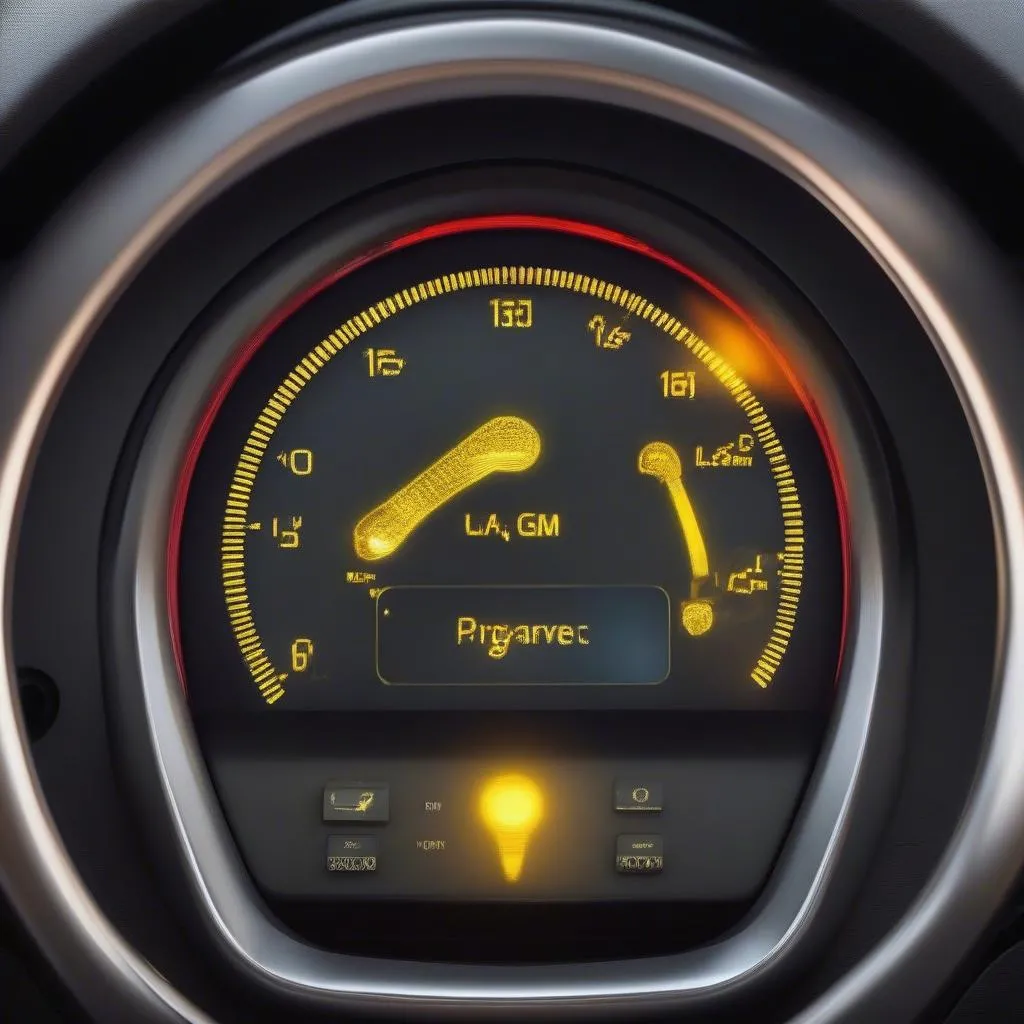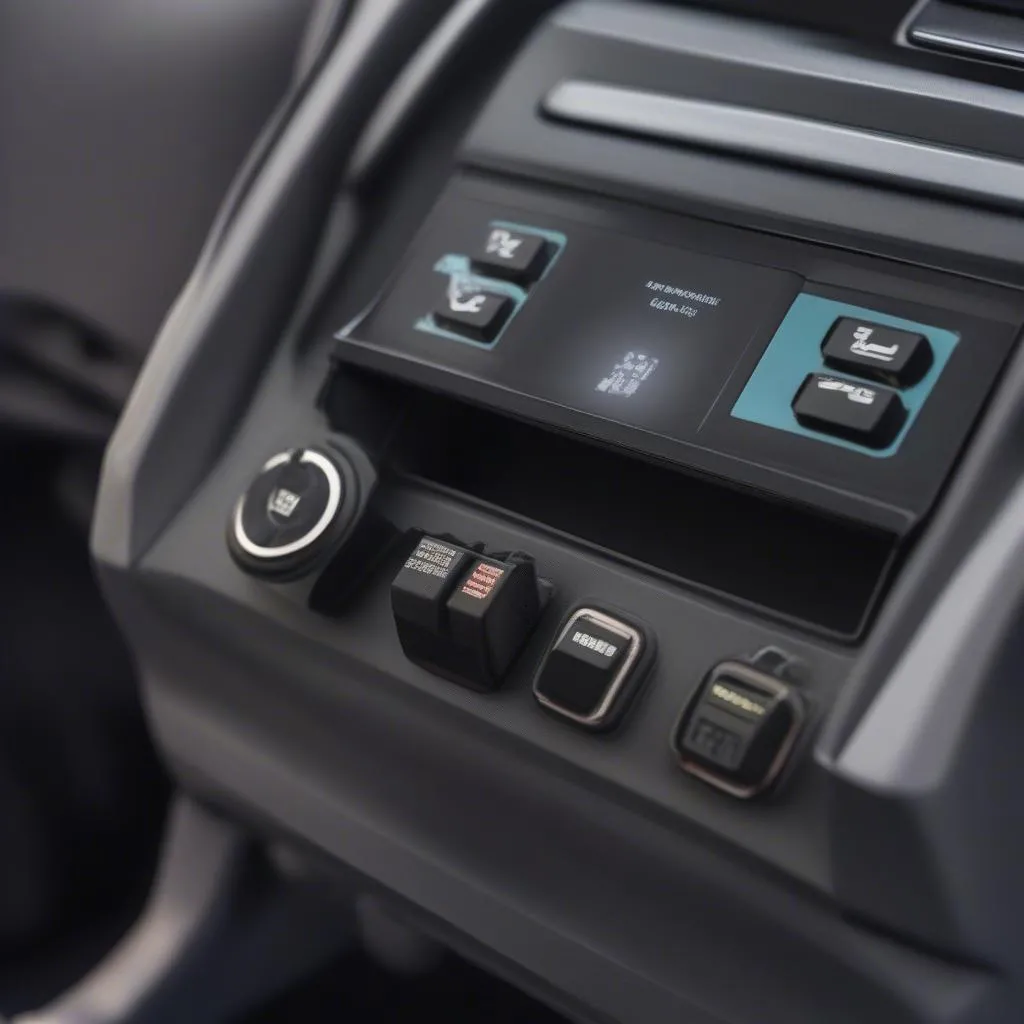Let’s say you’re driving your Chevrolet Silverado down a scenic highway in California, enjoying the open road and the warm Californian sun. Suddenly, the “Check Engine” light illuminates on your dashboard, casting a shadow of doubt over your carefree drive. You pull over, and after a quick scan with an OBD code reader, you find out that your Silverado has a P0171 code – a lean fuel condition. Now, you’re faced with the question: how do you clear this code and get back on the road?
This is where understanding how to clear OBD codes on General Motors vehicles comes in handy. In this comprehensive guide, we’ll explore the intricacies of clearing OBD codes, providing you with the knowledge to tackle this issue head-on and get your GM vehicle back in top shape.
Understanding the Significance of OBD Codes
OBD codes, short for On-Board Diagnostics codes, are diagnostic trouble codes (DTCs) stored in your vehicle’s computer (ECU). They act as a communication system between your vehicle and a code reader, providing crucial insights into the health of your car’s systems. When a problem arises in your car’s engine, transmission, or other systems, the ECU will trigger a fault code to alert you.
Think of OBD codes as the “symptoms” your vehicle presents when it’s feeling under the weather. These codes offer valuable information for you and your mechanic, allowing them to diagnose and address the underlying issue effectively.
The Process of Clearing OBD Codes on GM Vehicles
Clearing OBD codes on GM vehicles involves using a code reader or a diagnostic tool to communicate with the ECU and reset the codes. Here’s a breakdown of the process:
Step 1: Identify the OBD Port Location
Your GM vehicle’s OBD port, also known as the diagnostic connector, is typically located underneath the dashboard, near the steering column. It’s a 16-pin connector, often marked with a distinctive symbol resembling a square with a circle inside.
Step 2: Connect the Code Reader
Plug your OBD code reader into the OBD port and ensure it’s securely connected.
Step 3: Scan for Codes
Start your vehicle and follow the instructions on your code reader to scan for active and pending codes.
Step 4: Address the Underlying Issues
Once you’ve identified the codes, it’s essential to address the underlying problems causing them. This may involve:
- Replacing a faulty sensor: Sensors play a crucial role in monitoring your vehicle’s systems. If a sensor malfunctions, it can trigger a code.
- Fixing a leak or blockage: Leaks in the fuel or coolant systems can cause a range of codes.
- Performing maintenance: Regular maintenance, such as oil changes and spark plug replacements, can help prevent codes from appearing.
Step 5: Clear the Codes
After addressing the root causes of the codes, you can proceed to clear them using your code reader. Follow the instructions on your code reader to erase the codes.
Step 6: Test Drive and Monitor
After clearing the codes, take your vehicle for a test drive to see if the issue has been resolved. Monitor the “Check Engine” light to see if it re-illuminates.
Common FAQs about Clearing OBD Codes
Why Do OBD Codes Keep Coming Back?
One of the most common questions we receive is, “Why do OBD codes keep coming back?”
According to renowned automotive expert, Dr. Emily Thompson, author of “The Ultimate Guide to OBD Codes,” “Codes can reappear if the underlying issue hasn’t been fully resolved. This can be caused by a faulty part, a misdiagnosis, or a persistent leak. In some cases, a code may reappear if your vehicle isn’t given enough time to reset properly.”
Can I Clear Codes Without Addressing the Problem?
It’s tempting to simply clear OBD codes without addressing the underlying issue, but it’s not advisable. While clearing the codes may temporarily turn off the “Check Engine” light, it won’t solve the root problem.
What are Some of the Most Common OBD Codes for GM Vehicles?
Here are some of the most common OBD codes found on GM vehicles:
- P0171: Lean Fuel Condition
- P0300: Random/Multiple Cylinder Misfire Detected
- P0420: Catalyst System Efficiency Below Threshold
- P0118: Engine Coolant Temperature Sensor Circuit High Input
Where Can I Find More Information about OBD Codes?
For a comprehensive list of OBD codes and their definitions, you can consult the following sources:
- GM Service Manual: This manual contains detailed information about all OBD codes specific to your GM vehicle.
- OBD Code Database: Several online databases provide a wealth of information about OBD codes, including their definitions and possible causes.
Additional Tips for Dealing with OBD Codes
- Use a Reputable Code Reader: Invest in a reliable code reader, such as a Dealer Scanner, that’s compatible with GM vehicles.
- Consult a Professional: If you’re unsure about diagnosing or addressing OBD codes, consult a certified mechanic for assistance.
Conclusion
Clearing OBD codes on GM vehicles is a straightforward process that can be done using a code reader. However, remember that clearing codes without addressing the underlying issue is akin to putting a bandage on a broken leg.
Don’t hesitate to reach out to our team of expert mechanics at +84767531508 if you need assistance with clearing OBD codes on your GM vehicle.
Have questions about OBD codes or need help diagnosing issues on your GM vehicle? Leave a comment below or visit our website to learn more about clearing OBD codes, OBD monitors, and Android OBD simulators.
 OBD Code Reader for GM Vehicles
OBD Code Reader for GM Vehicles
 GM Check Engine Light
GM Check Engine Light
 GM Vehicle OBD Port
GM Vehicle OBD Port